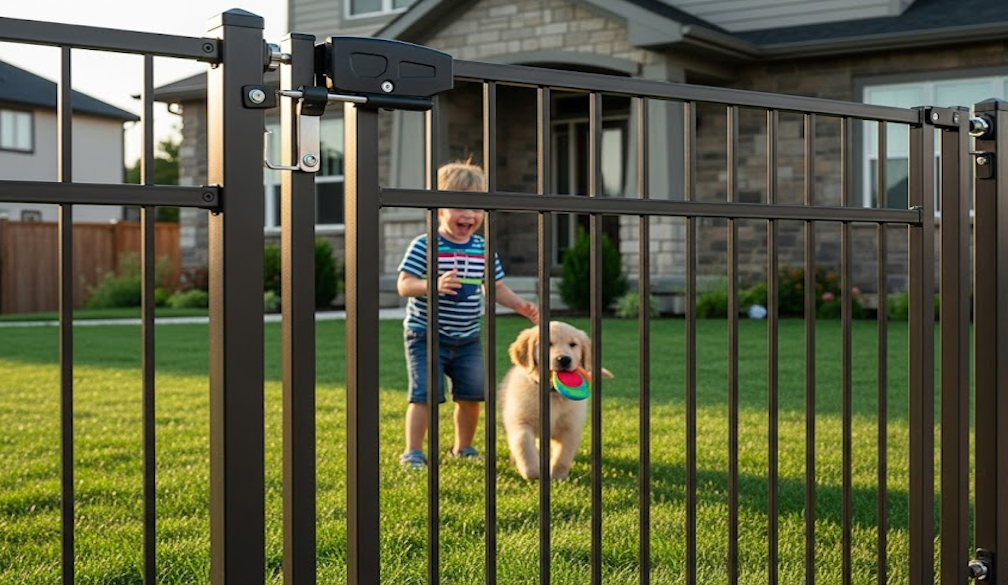How to Child-Proof or Pet-Proof Your Residential Gate

When it comes to home safety, many homeowners focus on securing doors, windows and fences—yet gates are often overlooked. Whether you have curious toddlers or adventurous pets, ensuring your residential gate is both child-proof and pet-proof is essential to maintaining a safe and stress-free home environment. A properly secured gate doesn’t just enhance safety—it offers peace of mind.
If you’re considering ways to better secure your property, modern automatic gate solutions in Melbourne offer a sleek and secure approach, integrating safety features designed to keep even the most persistent little explorers contained.
Install Child-Safe Latches and Locks
Standard gate latches can often be reached or manipulated by small children. Child-safe gate latches should be positioned at least 1.5 metres above the ground and be equipped with a mechanism that requires dexterity beyond a toddler’s ability—such as a two-step release system or magnetic locks.
Add Self-Closing Hinges
Children and pets can be quick, and a gate left ajar even for a moment can pose a safety risk. Installing self-closing hinges ensures the gate closes automatically every time, removing the risk of accidental openings. For added protection, pair them with a soft-close feature to prevent finger injuries.
Reduce Gaps in or Beneath the Gate
Small pets, especially puppies and cats, can squeeze through surprisingly small spaces. Choose a gate design that eliminates wide gaps or install mesh barriers to fill in any open sections. Be sure to check the clearance beneath the gate—this is a common escape route for pets.
Use Gate Alarms or Sensors
Smart security options are now more accessible than ever. Consider adding sensors or alarms that notify you when a gate has been opened. This feature is particularly useful if you have an automatic or electric gate that may occasionally malfunction or remain open longer than intended.
Avoid Horizontal Bars or Grippable Surfaces
Gates with horizontal rails or textured surfaces can become climbing frames for adventurous kids. Opt for vertical pickets or smooth panels that offer no foothold. This discourages climbing and reduces the chance of falls or injuries.
Consider a Secondary Barrier
In high-risk areas—such as driveways or near swimming pools—an additional internal gate or barrier can serve as a backup layer of protection. This is especially useful when the primary gate is open for vehicle access.
Keep Controls and Remotes Out of Reach
If you have an automatic gate, always keep remotes or control panels out of reach of children. Some modern gate systems include keypad locks with child-safe settings or smartphone control features, offering added layers of protection.
Regularly Inspect for Wear and Tear
Hinges, latches, automation components and gate panels can all deteriorate over time. Conduct regular inspections to ensure everything is in good working order, and promptly repair or replace any damaged parts to avoid creating safety hazards.
Ready to get started?
Child-proofing or pet-proofing your gate is not just a one-time job—it’s an ongoing commitment to keeping your loved ones safe. Whether you’re upgrading an existing gate or installing a new system, investing in secure and modern automatic gate solutions is a smart, long-term safety decision. With thoughtful design and the right features in place, your gate can become a reliable barrier between safety and risk.





